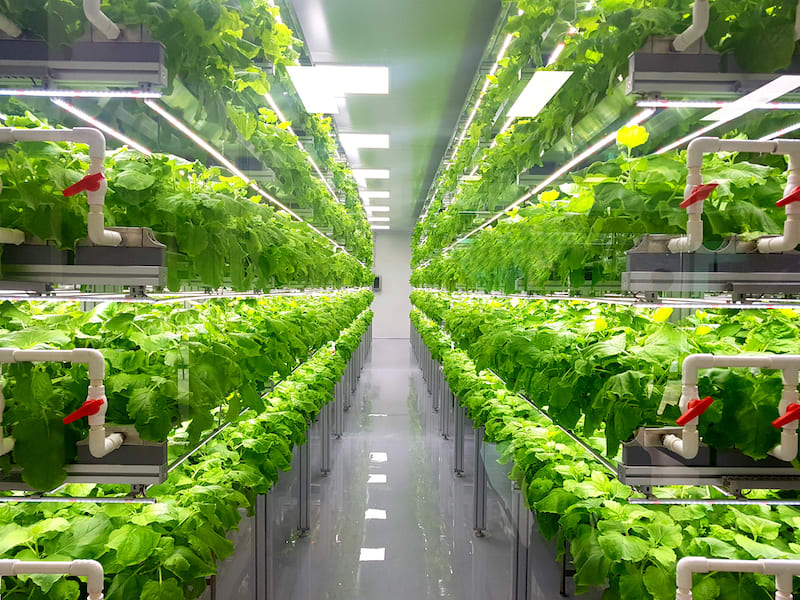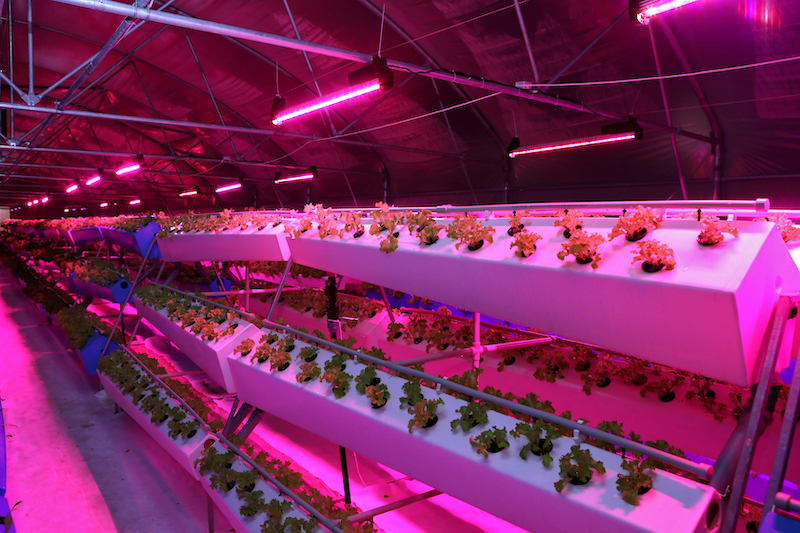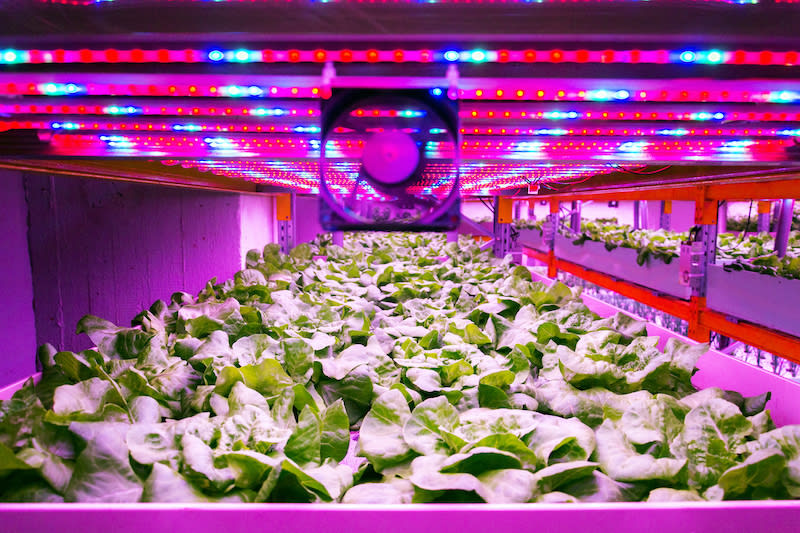The Challenges of the Vertical Farm
Follow articleHow do you feel about this article? Help us to provide better content for you.
Thank you! Your feedback has been received.
There was a problem submitting your feedback, please try again later.
What do you think of this article?
In our previous article, we looked at the trends that have led to the emergence of vertical farming. The challenges of a growing global population, climate change and competing uses for agricultural land mean that farmers are looking for alternative ways of producing food. Vertical farming is one approach to solving this problem by using urban or industrial spaces to grow crops.
In this article, we will look at some of the technology that is making the vertical farm a reality. The agricultural industry has always been an advanced industry, and so it should come as no surprise that vertical farming uses interesting and exciting methods to solve its unique challenges.
The key feature of the vertical farm is that it exists far from the conventional agricultural environment. This is one of its most appealing features – a vertical farm can be established in almost any available space, including disused subways or metro tunnels, empty industrial buildings, or even empty shipping containers. Creating a working farm in the heart of a city, far from any normal farm, means that food can be produced amid the population that needs it. With food security an increasing concern globally, communities can use vertical farming to help take back control of their own needs.
The growing of crops in these artificial spaces means creating the conditions in which plants can thrive. This presents both a challenge and a benefit. The challenge should be clear – the environment that the plants need to be healthy will be entirely man-made. Everything from light and water to nutrients and the atmosphere itself will need to be managed carefully.
The careful management required by the growing space does also presents one of its key benefits. Far from the damage caused by frost or poor weather, the farmer can create the optimal conditions for crops to grow. This is one of the contributing factors that make the vertical farm capable of feeding hungry cities.
When compared to 1 square meter of open field, the stacked trays of crops can produce far more food while using the same floor area. Most of these crops will be grown using hydroponic or aeroponic techniques. Unlike in open fields, water that is not taken up by crops can be collected and reused, meaning that crops can be grown using just a fraction of the volume of water required by a conventional farm.
Growing crops using aeroponic technology
The location of the vertical farm in the heart of the city also contributes enormously to reducing agriculture’s carbon footprint. Unlike conventional farming, food grown in the city can be delivered in minutes, providing fresh produce with virtually no transportation costs.
The case for vertical farming, especially when looking at its impact on the environment is compelling – this study makes fascinating reading. However, the technological needs are huge.
As mentioned, the vertical farm depends on the farmer exercising total control over the growing environment, and this will require the employment of advanced technology. Sensors will be critical to monitor the growing conditions and will include temperature, humidity and gas sensors, each producing large amounts of data that needs to be gathered and processed. The computing power required to interpret these inputs may need to work whilst exposed to the moisture and humidity of the growing environment.
Light is vital to growing crops. Vertical farms are intended to operate away from direct sunlight, and so the light will need to be provided by LEDs. Plants grow best when exposed to certain wavelengths, and modern LED technology allows farmers to change both the wavelength and intensity of the light. RS has published a fascinating guide that shows how different wavelengths promote plant growth. However sophisticated the LED lighting system will be, it also needs to be able to withstand high levels of humidity.
LEDs will provide the light for growing crops, delivering the right wavelength for optimum growing conditions.
While the vertical farm will not be subjected to wind, there will be the need to promote airflow over the crops, both to ensure the optimum temperature and to provide the best atmosphere for growth. Fans will be required to create the movement of air, and these too will need to withstand humid environments.
The parallel growth of the Internet of Things (IoT) has also provided the possibility of additional functionality for the vertical farm. The array of sensors, fans, lights and computing devices will be integrated into a network, allowing the farmer to monitor the status of the farm remotely and make changes to the growing environment.
To become part of a network, all of these components – sensors, fans, computers and lights – will need to be connected. While wireless communications will play their part, including short-range technology such as Bluetooth or the latest 5G network, many of these devices will require physical connections.
There are plenty of options when the time comes to choose a connector for tough environments. While the vertical farm shares many features with the latest Industrial IoT designs, it presents its own unique set of conditions. The sheer volume of connections required, the restricted space, and the need to resist a high-humidity environment means that small, lightweight connectors are the ideal choice.
Except for a few specialised parts including LED lamp arrays for growing crops, few manufacturers have so far released components that are designed specifically for vertical farming. The good news is that the Industrial IoT market provides a range of components However, the industrial world has a huge range of options that are ideal for the challenging environment of the vertical farm. RS has created an excellent guide to the world of Industrial IoT, with plenty of information for installers and designers.
The vertical farm is set to play a huge role in ensuring food security in the future. Growing food in the heart of the city, using fewer resources than conventional farming, just meters from the people who will eat the crops, will also help to reduce our impact on the natural environment.
Vertical farming is not the ultimate solution to our future food needs. Some crops simply cannot be grown using hydroponic or aeroponic techniques, and so there will still be a place for conventional farming, although the smart agriculture revolution is bringing technology to “ordinary” farming. However, vertical farming offers the opportunity for cities to take control of their own food needs in a new and exciting way.





